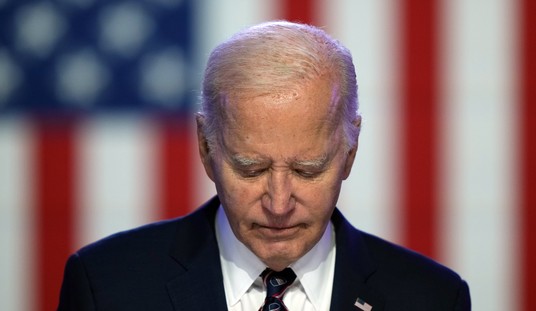On Tuesday, November 8 — actually, during the weeks leading up to November 8, thanks to the travesty known as “early voting” — Ohioans have been and will be voting on two crucial ballot issues. One of the results will largely determine whether the Buckeye State continues to be governed like a heading-towards-broke blue state — as it was for over 15 years before current Governor John Kasich took office — or a recovering red one. Both could heavily influence the red or blue direction of the entire nation.
Ballot Issue 2 is about whether to keep Senate Bill 5 (SB5), a law the state’s legislature passed earlier this year, on the books. The law:
- Requires public-sector employees to contribute 10 percent of their salaries towards their pensions, and to pay 15 percent of their health-care costs.
- Outlaws public employee strikes while banning binding arbitration.
- Gives cities, counties, and school districts badly needed flexibility to control their costs.
- Institutes merit pay for teachers, and potentially protects excellent but less experienced teachers from seniority-based layoffs.
A “yes” vote means that SB5 stays; a “no” vote repeals it.
Issue 3, the Ohio Health Care Freedom Amendment, is a direct response to what has become known, even to the president himself, as “Obamacare.” If it passes, Issue 3 will ensure that no federal, state, or local rule enacted after March 19, 2010 can:
- Force any Ohioan “to participate in a health care system”;
- “[P]rohibit the purchase or sale of health care or health insurance”;
- “[I]mpose a penalty or fine for the sale or purchase of health care or health insurance.”
A “yes” vote, subject to a likely federal constitutional challenge, will mean that the Amendment becomes part of Ohio’s constitution. A “no” vote will provide aid and comfort to statists who believe that they alone should be entrusted with micromanaging the delivery of health care and health insurance services in this country. While Issue 3 has drawn a bit of attention from the Obama administration, it appears to be ahead in the polls, and will probably pull in additional support for Issue 2.
What wasn’t expected was a move which I believe Issue 2’s opponents may come to regret. Late last week, despite his declining poll numbers in the state (from a net 4-point approval margin to an 8-point disapproval in the past five months, according to Quinnipiac on October 26) and his recent virtual blessing of Occupy Wall Streeters who have turned out in several instances to be nothing more than potty-mouthed, violent hooligans with an incoherent cause, Obama’s already ramped-up reelection machine came out swinging against Issue 2. Ohioans on the campaign’s email list were told:
On everyone’s ballot this fall is Issue 2 (formerly known as Senate Bill 5, or SB 5) — a law that forces many state employees, including teachers, firefighters, and police officers, to give up their right to bargain collectively for important benefits and working conditions. It’s a blatant attempt to balance the state’s budget on the backs of Ohio’s hard-working people.
In May, when Obama made a remark criticizing Wisconsin and Ohio for their attempts to rein in collective-bargaining excesses while balancing their budgets without tax increases, Kasich famously shot back: “[W]hen he does his job and gets our (federal) budget balanced and starts to prepare a future for our children, then maybe he can have an opinion on what’s going on in Ohio.” By that appropriate measurement, Obama and his administration, in backing a spendthrift “jobs act” which is so pathetic that they couldn’t even get all Democrats in the Senate to buy in, are less entitled to an opinion now than they were five months ago.
Even by recent electoral non-standards of veracity, the lies and misinformation put forth by Issue 2’s free-spending, largely out-of-state opposition have been extraordinarily brazen. Among them are howlers about public safety being compromised, reduced staffing levels, inadequate training, and as alleged in the Obama campaign email above, unsafe working conditions. The fact is that Issue 2’s passage will affect none of these areas, which are either matters covered in existing laws and regulations or are already management prerogatives not subject to negotiation.
Another claim of Issue 2 opponents is that Ohio under Kasich “continues to lose jobs.” Wrong again. The state gained seasonally adjusted jobs in every month from January through August — 84,000 in total — before preliminarily (and, in my view, a bit suspiciously) losing over 21,000 in September.
The opponents’ most underhanded tactic occurred early this year as SB5 was under consideration. Union leaders at schools and other organized workplaces, taking great care not to leave any tracks, quietly told teachers and others that the law’s passage would reduce their pay by 40%-50%. Though there is no credible basis whatsoever for this claim, many public employees who might ordinarily be receptive to supporting Issue 2’s reforms believed the lie and have become impervious to any attempt at rational discussion.
Issue 2 is so obviously superior to business as usual that most of Ohio’s newspapers, which on the whole lean decidedly left, have endorsed it. Some of those endorsements have raised possibly reasonable points that the law may in certain instances go too far. Kasich himself considered that possibility, and in August invited public-sector union leaders to discuss what might be done to adjust it. Union leaders wouldn’t meet without SB5 first being repealed. The meeting never happened. Labor’s intransigence has become so alarming that two prominent Democrats, Toledo’s current mayor and a now-former Cincinnati City Council member, are among Issue 2’s most ardent proponents.
The twisted definition of “negotiation” just described explains why other public-sector union-dominated states are in so much trouble. In Illinois, out-of-control state employee wages and perks are virtually untouchable, while vendors and Medicaid providers wait months to get paid. Decades of public-sector union dominance have taken Rhode Island to the point where “ten cents of every state tax dollar now goes to retired public workers.” Connecticut’s state debt per capita of over $5,400 is the highest in the nation. All three states tried to solve their fiscal problems with tax increases, which have predictably solved nothing.
Obama’s stake in Issue 2’s failure is clear. Continuing the unsustainable status quo helps keep Democratic campaign coffers full. Additionally, states whose situations become incurable will run to Washington for bailouts, which will create opportunities for even stronger federal control.
Supposed friends in the Republican Party haven’t always been helpful. On Tuesday, GOP presidential candidate Mitt “Flip-Flop” Romney, visiting — of all places — a get-out-the-vote phone bank, wouldn’t commit to supporting Issue 2. On Wednesday, he flipped back to “110% support,” which of course won’t fully repair the damage. Naturally, Team Obama pounced.
Polls show Issue 2 trailing, which is not at all surprising or even necessarily troubling. Ohio’s issue-related polls have a history of serious inaccuracy favoring the leftist position. Six years ago, two George Soros-driven “reform” proposals were ahead in two statewide polls just before Election Day by an average of 28 points. They lost by an average of 31. On Thursday, a leaked memo from Issue 2’s opponents, as interpreted by the Washington Post’s Greg Sargent, suggested that “the fight could still go either way.”
As usual, it will all come down to who gets their supporters to the polls. I would encourage readers, even those from outside the Buckeye State, to contact their center-right friends, relatives, and acquaintances and ask them to be sure they vote. The financial viability and competitiveness of Ohio, and the ability of other states to address their own fiscal quagmires, both likely hang in the balance.








Join the conversation as a VIP Member